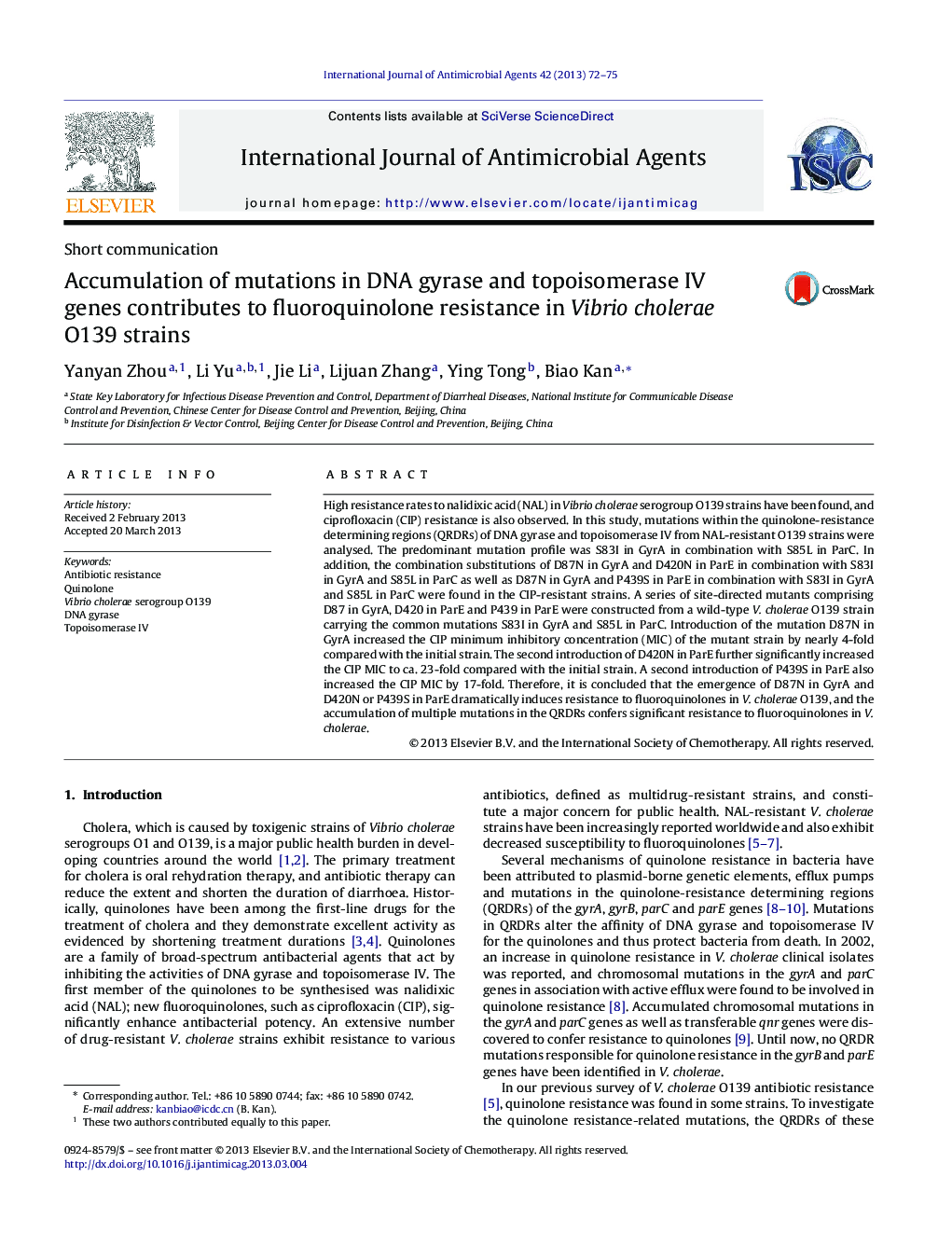| Article ID | Journal | Published Year | Pages | File Type |
|---|---|---|---|---|
| 3358794 | International Journal of Antimicrobial Agents | 2013 | 4 Pages |
High resistance rates to nalidixic acid (NAL) in Vibrio cholerae serogroup O139 strains have been found, and ciprofloxacin (CIP) resistance is also observed. In this study, mutations within the quinolone-resistance determining regions (QRDRs) of DNA gyrase and topoisomerase IV from NAL-resistant O139 strains were analysed. The predominant mutation profile was S83I in GyrA in combination with S85L in ParC. In addition, the combination substitutions of D87N in GyrA and D420N in ParE in combination with S83I in GyrA and S85L in ParC as well as D87N in GyrA and P439S in ParE in combination with S83I in GyrA and S85L in ParC were found in the CIP-resistant strains. A series of site-directed mutants comprising D87 in GyrA, D420 in ParE and P439 in ParE were constructed from a wild-type V. cholerae O139 strain carrying the common mutations S83I in GyrA and S85L in ParC. Introduction of the mutation D87N in GyrA increased the CIP minimum inhibitory concentration (MIC) of the mutant strain by nearly 4-fold compared with the initial strain. The second introduction of D420N in ParE further significantly increased the CIP MIC to ca. 23-fold compared with the initial strain. A second introduction of P439S in ParE also increased the CIP MIC by 17-fold. Therefore, it is concluded that the emergence of D87N in GyrA and D420N or P439S in ParE dramatically induces resistance to fluoroquinolones in V. cholerae O139, and the accumulation of multiple mutations in the QRDRs confers significant resistance to fluoroquinolones in V. cholerae.
